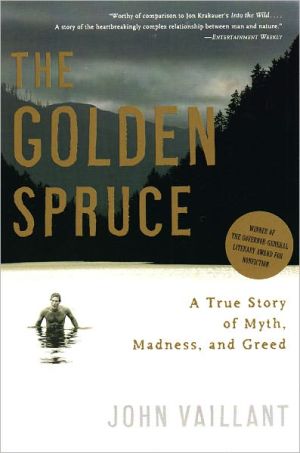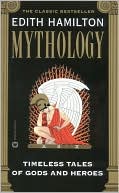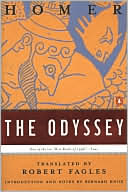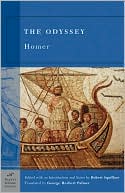The Golden Spruce: A True Story of Myth, Madness, and Greed
A tale of obsession so fierce that a man kills the thing he loves most: the only giant golden spruce on earth.\ As vividly as Jon Krakauer put readers on Everest, John Vaillant takes us into the heart of North America's last great forest, where trees grow to eighteen feet in diameter, sunlight never touches the ground, and the chainsaws are always at work.\ When a shattered kayak and camping gear are found on an uninhabited island, they reignite a mystery surrounding a shocking act of...
Search in google:
A tale of obsession so fierce that a man kills the thing he loves most: the only giant golden spruce on earth. The New York Times - William Grimes The Golden Spruce has architectural weaknesses, but Mr. Vaillant is absolutely spellbinding when conjuring up the world of the golden spruce. His descriptions of the Queen Charlotte Islands, with their misty, murky light and hushed, cathedral-like forests, are haunting, and he does full justice to the noble, towering trees - the Ent-like sequoias, Sitkas, red cedars and Douglas firs - that once stretched, in an unbroken line, from Kodiak Island down to Mendocino. The treacherous waters of the Hecate Strait, which divides the Charlottes from the mainland, inspire some memorable, rip-snorting passages. The chapters on logging, painstakingly researched, make high drama out of the grueling, highly dangerous job of bringing down some of the biggest trees on earth.
\ From Barnes & Noble"There was only one giant golden spruce in the world, and, until a man named Grant Hadwin took a chainsaw to it, in 1997, it had stood for more than three hundred years in a steadily shrinking patch of old-growth forest in Port Clements, on the banks of the Yakoun River, in the Queen Charlotte's Islands." Thus began a 2002 New Yorker article by John Vaillaint. From the acorn of that story grew this truly arresting book, which charts the intersection of a scientific mystery and a human enigma. The golden spruce was unique, the outgrowth of a one-in-a-billion seedling that lacked like-giving chlorophyll yet somehow survived. Unlike the tree, which was worshipped as a deity by local Indians, the man was a lone wolf, an angry survivalist stuck in the wrong century. Their dramatic, doubly doomed conjunction imbues Golden Spruce with a tragic significance.\ \ \ \ \ Entertainment WeeklyIn a . . . narrative worthy of comparison to Jon Krakauer’s Into the Wild, Vaillant uses a tragic episode to tell a larger story of the heartbreakingly complex relationship between man and nature.\ \ \ William Grimes - New York Times“Absolutely spellbinding.”\ \ \ \ \ New York TimesAbsolutely spellbinding.— William Grimes\ \ \ \ \ William GrimesThe Golden Spruce has architectural weaknesses, but Mr. Vaillant is absolutely spellbinding when conjuring up the world of the golden spruce. His descriptions of the Queen Charlotte Islands, with their misty, murky light and hushed, cathedral-like forests, are haunting, and he does full justice to the noble, towering trees - the Ent-like sequoias, Sitkas, red cedars and Douglas firs - that once stretched, in an unbroken line, from Kodiak Island down to Mendocino. The treacherous waters of the Hecate Strait, which divides the Charlottes from the mainland, inspire some memorable, rip-snorting passages. The chapters on logging, painstakingly researched, make high drama out of the grueling, highly dangerous job of bringing down some of the biggest trees on earth.\ — The New York Times\ \ \ \ \ Publishers WeeklyThe felling of a celebrated giant golden spruce tree in British Columbia's Queen Charlotte Islands takes on a potent symbolism in this probing study of an unprecedented act of eco-vandalism. First-time author Vaillant, who originally wrote about the death of the spruce for the New Yorker, profiles the culprit, an ex-logger turned messianic environmentalist who toppled the famous tree-the only one of its kind-to protest the destruction of British Columbia's old-growth forest, then soon vanished mysteriously. Vaillant also explores the culture and history of the Haida Indians who revered the tree, and of the logging industry that often expresses an elegiac awe for the ancient trees it is busily clear-cutting. Writing in a vigorous, evocative style, Vaillant portrays the Pacific Northwest as a region of conflict and violence, from the battles between Europeans and Indians over the 18th-century sea otter trade to the hard-bitten, macho milieu of the logging camps, where grisly death is an occupational hazard. It is also, in his telling, a land of virtually infinite natural resources overmatched by an even greater human rapaciousness. Through this archetypal story of "people fail[ing] to see the forest for the tree," Vaillant paints a haunting portrait of man's vexed relationship with nature. Photos. Agent, Stuart Krichevsky. 8-city author tour. (May) Copyright 2005 Reed Business Information.\ \ \ \ \ KLIATTThe golden spruce of the title was a giant tree that grew on one of the Queen Charlotte Islands in British Columbia, Canada. In 1997, a logger named Grant Hadwin, who became a rabid environmentalist, cut down the tree that served as a unique and sacred symbol of the culture and history of the Haida Indians as well as a living representation of what we have lost through the greed and destructiveness of the logging industry. Hadwin's act was meant to show the world what it was losing by destroying the very thing he wanted to protect. Soon after he mysteriously disappeared while on a kayaking trip. Vaillant describes the life of Hadwin to try to understand his actions, but he also uses this strange act and disappearance as the centerpiece of his story of the Northwest: its history of violence, culture clashes and quest for wealth. He also tells of the troubling relationship man has with nature and the impact of man's ability to destroy that which seems larger and more powerful than himself. The book is filled with the history and culture of the area and its people and is filled with thoughtful insights.\ \ \ \ \ Library JournalVaillant covers a real mystery: why logger-turned-activist Grant Hadwin chainsawed a gorgeous Sitka spruce that stood 165 feet tall-and then disappeared. Copyright 2005 Reed Business Information.\ \ \ \ \ Kirkus ReviewsNature essay meets true-crime tale. Canadian journalist Vaillant's debut begins with a mystery: A beachcombing biologist turns up a broken kayak on the shore of an uninhabited Alaskan island and, lucky day, begins to disassemble it for its parts, only to discover scattered camping gear and other equipment that pointed to either foul play or terrible accident. That suspenseful setup is left hanging as Vaillant switches into ecologist mode, explaining the dynamics of the Northwest's rainforests, where "there is no graceful interval between the ocean and the trees; the forest simply takes over where the tide wrack ends, erupting full-blown from the shallow, bouldered earth." On the rainy Queen Charlotte Islands of British Columbia, a region of astoundingly tall trees, one stood taller than all others; born around 1700, this "golden spruce" had found a place at the heart of the native universe and had been set aside by generations of loggers who had worked the country. Having provided a history of logging and an appreciation of Haida lifeways, the author moves toward its strange center: the tale of an "upper-middle-class prep school refugee" who had found something approaching refuge in the remote woods and become a master logger, widely praised for the quality of his work. "He was opinionated and eccentric, but he was also a strenuous provider," Vaillant writes, a sober and industrious fellow who snapped; he now became an anti-logging activist, and somewhere along the way, for reasons of his own, he hit on an idea to commit an act of eco-sabotage that would call attention to the plight of the old-growth forest. Vaillant's start-and-stop narrative yields whiplash here and there, but he ablycovers all the bases: the logger's actions may have been local, but they had wide-ranging implications, and Vaillant pauses to consider them all. One of them is surprising: the tree, once little known, "has become the most widely dispersed Sitka spruce on earth." Vaillant's tale of how it got to be so is of unfailing interest. Author tour\ \








